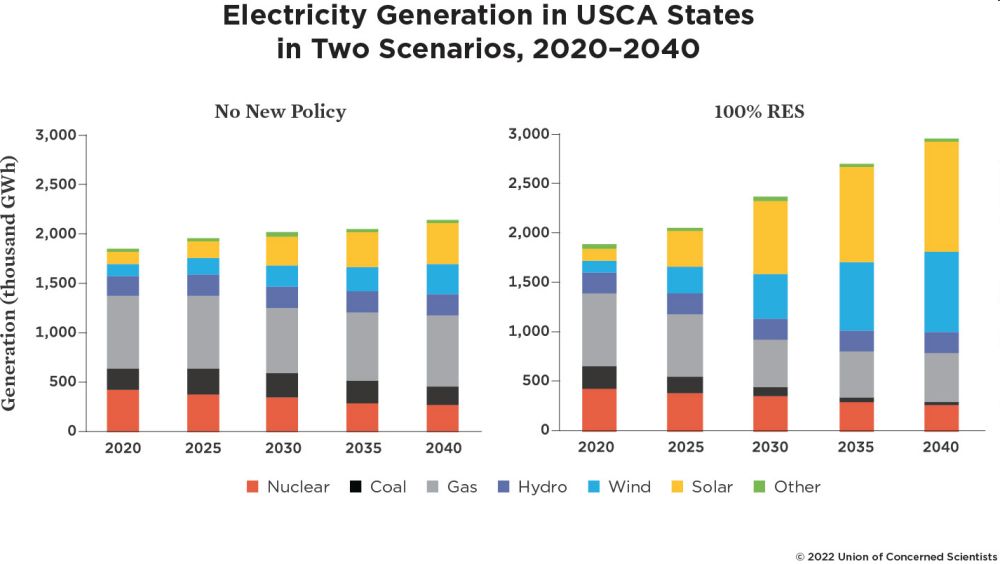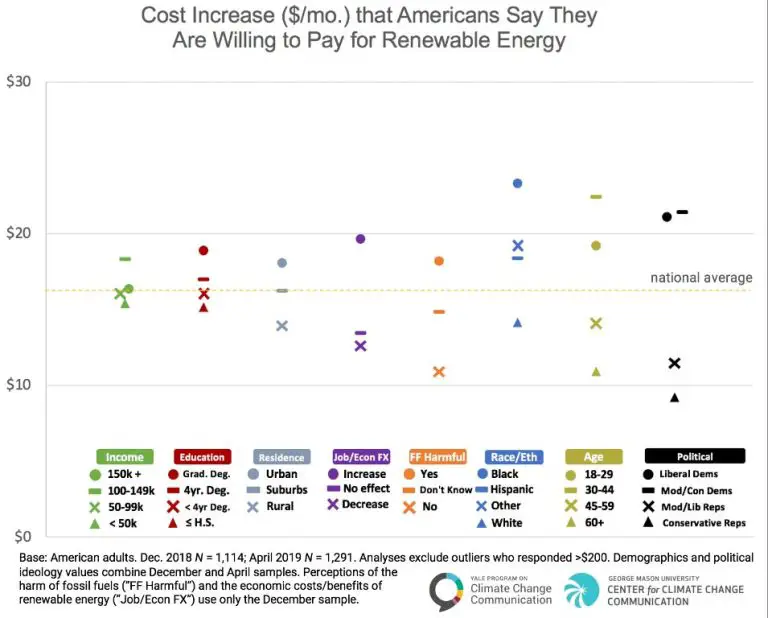Will We Ever Have 100% Renewable Energy?
The Current State of Renewable Energy

Renewable energy sources like hydropower, wind, solar, geothermal and bioenergy accounted for roughly 12.6% of the world’s total energy consumption in 2020, according to the International Energy Agency. While the share of renewables has grown significantly in recent decades, most of the world’s energy still comes from fossil fuels like oil, coal and natural gas.
The share of renewables in electricity generation is higher than overall energy use. In 2021, renewables generated 29% of global electricity according to Our World in Data. The growth has accelerated in recent years, particularly for solar and wind power. Projections suggest renewables could generate up to 85% of global electricity by 2050 if growth trends continue.
However, fully transitioning to renewable energy faces considerable challenges. Renewables like solar and wind remain more expensive than fossil fuels in many locations. Storage and transmission infrastructure requires massive upgrades to handle intermittent power. Fossil fuel interests continue lobbying against policies that enable renewable growth. Despite the momentum, renewables replacing most fossil fuel use will likely take decades more.
Why 100% Renewables?
There are several compelling reasons why transitioning to 100% renewable energy should be a priority. Three of the main drivers are addressing climate change challenges, achieving energy independence, and improving public health.
Climate scientists widely agree that rapidly reducing greenhouse gas emissions from fossil fuels is crucial to avoid the worst impacts of climate change. Replacing fossil fuels with renewable energy sources like wind, solar, geothermal and hydropower is essential for reaching net zero emissions and limiting global warming to 1.5°C above pre-industrial levels, as outlined in the Paris Agreement. According to the Stanford study, transitioning to 100% renewables in 143 countries by 2050 could reduce global CO2 emissions 86% compared to fossil fuel reliance. This massive emissions reduction is needed to prevent irreversible climate disruption.
Relying so heavily on fossil fuels also undermines energy independence and security. Imported oil and gas leave countries vulnerable to price shocks and supply disruptions. Growing renewable energy domestically provides a stable, affordable power supply and reduces dependence on foreign oil producers. The Stanford study found transitioning to 100% renewable electricity could save trillions in avoided fuel costs. Local renewables also decentralize energy production so communities are empowered with their own power sources.
Furthermore, phasing out fossil fuels provides tremendous public health benefits. Air pollution from burning coal, oil and gas contributes to 7 million premature deaths annually worldwide, according to the WHO. Transitioning to zero-emissions renewables will significantly reduce hazardous air pollutants linked to respiratory disease, heart disease, cancer and more. Clean energy also reduces water pollution and contamination from mining and drilling activities. Improved health outcomes can save healthcare costs and boost economic productivity.
Political and Economic Factors
Government policies and incentives play a major role in the growth of renewable energy. Many countries have implemented renewable energy targets, subsidies, tax credits, and other programs to encourage investment and adoption of renewables (UNU-WIDER, 2022). For example, feed-in tariffs provide guaranteed pricing for supplying renewable electricity to the grid, which reduce risk and increase returns for investors. However, fluctuating political priorities can undermine long-term policy support.
Private sector investment in renewables has grown substantially in recent years, totaling over $300 billion globally in 2020 (Cadoret, 2016). As costs continue to fall, renewables are increasingly cost-competitive with fossil fuels, further driving private investment. However, investment remains heavily concentrated in certain countries, with China accounting for over 40% of global renewables investment.
The levelized cost of electricity from renewables has declined dramatically, with solar PV and wind costs falling over 90% in the past decade (Uzar, 2020). In many markets, new renewable generation is now cheaper than operating existing coal and gas plants. As renewable costs keep falling while fossil fuel costs remain volatile, renewables are poised to take an increasing market share going forward.
Technology Advancements
Technological innovations and advancements will play a critical role in our transition to 100% renewable energy. According to the World Economic Forum, key innovations like floating solar panels, hydrogen electrolyzers, and AI-enabled wind turbines will accelerate the growth of renewables and improve efficiency (source). The European Investment Bank also highlights innovations in offshore wind power, green hydrogen, and batteries as critical clean energy solutions (source).
In solar technology, we are seeing improvements in panel efficiency, perovskite solar cells, solar thermal storage, and floating solar farms (source). For wind power, larger turbines, floating turbines, and AI-optimized turbine spacing are driving growth. Advancements in energy storage like grid-scale batteries and compressed air storage are also key to managing the intermittency of renewables. Smart grid innovations are enabling better integration of decentralized renewable sources into the grid.
Forecasts predict exponential growth in renewable energy capacity over the next few decades. According to projections by the International Renewable Energy Agency (IRENA), renewable energy could supply over 90% of electricity demand by 2050 if accelerated growth and rapid technology adoption occur globally. However, to unlock the full potential of renewables, continued innovation and investment will be critical.
Grid Reliability Concerns
One major challenge with high levels of renewable energy is intermittency. Wind and solar power are only available when the wind is blowing or the sun is shining. This variability can put strain on the grid and make it difficult to match supply with demand (Denholm, 2021). When renewable generation drops off, backup power sources like natural gas or energy storage are needed to fill the gap. According to NREL, the last few percent to reach 100% renewables is most challenging and expensive due to intermittency and seasonal variation in generation (NREL, 2021).
Regional interconnected grids help smooth out some of this variability through geographic diversity of renewable resources. However, adding long-distance transmission lines comes with siting challenges and costs. Local microgrids with on-site storage may be another solution, providing backup power and resilience. But microgrids also face technical and regulatory hurdles (Denholm, 2021). More research is needed on how to best manage reliability with very high renewable penetration.
Use Cases and Success Stories
Several countries and regions around the world have made significant progress towards 100% renewable energy. According to Greenpeace, Iceland generates 100% of its electricity from renewable sources, including hydropower and geothermal energy. The country has an abundance of renewable resources to leverage. Costa Rica generated 98% of its electricity from renewables in 2016, relying on hydropower, wind, geothermal and solar. The country aims to be carbon neutral by 2021.
Some corporations have also made commitments to using 100% renewable energy. Google claims it has reached 100% renewable energy for its operations through purchasing renewables and investing in solar and wind farms around the world. Other companies like Apple, Facebook, Microsoft and Starbucks have also made commitments to use 100% renewable energy.
Many feasibility studies have shown that 100% renewable energy is possible in various countries if the right investments are made. Mark Z. Jacobson, professor of civil and environmental engineering at Stanford University, has published a study showing it’s feasible for 139 countries to be 100% powered by wind, water and solar energy by 2050.
Role of Nuclear Power
As countries aim to transition to 100% renewable energy, there is debate around the role nuclear power should play. Some argue nuclear can provide reliable baseload power to complement intermittent renewables like wind and solar, while others want to phase out nuclear due to safety and radioactive waste concerns.
According to the International Energy Agency (IEA), nuclear power will likely maintain a 12% share of global electricity in their most ambitious net zero scenario by 2050. They argue nuclear can provide stable low emissions electricity to balance variable renewable sources. However, they acknowledge that steep declines in battery storage costs may reduce the need for nuclear to balance renewables (IEA).
Others like Stanford Professor Mark Jacobson believe a 100% renewable grid without nuclear is possible with sufficient growth in wind, water and solar energy. He points to the intermittent nature of nuclear plants due to maintenance and unplanned outages as a reliability drawback. However, his analyses have faced criticism for underestimating the challenge of reaching very high renewable penetrations.
Concerns around nuclear safety and radioactive waste remain strong deterrents to expanding nuclear power, especially after incidents like Fukushima. A NREL study found the US could reach 100% clean electricity without nuclear by 2035 through major transmission expansion and renewable energy growth. Ultimately the optimal mix depends on factors like public acceptance, technology cost declines and political will.
Public Opinion Trends
Surveys show strong public support for renewable energy in the United States. A 2016 Pew Research Center poll found that 89% of Americans favor more solar farms and 83% support more wind turbine farms (Pew, 2016). Another 2018 survey by the Yale Program on Climate Change Communication showed that 81% of registered voters supported requiring utilities to produce 100% of their electricity from renewable sources like wind and solar (Yale, 2018).
There also seems to be willingness among the public to pay slightly more for renewable energy. The Yale survey found 71% of registered voters supported policies requiring utilities to charge a small monthly fee to fund renewable energy projects, even if it cost the average household an extra $2-3 per month. However, support declined at higher monthly costs. This indicates people generally favor the transition to renewables as long as costs remain low.
Projections and Targets
Many governments and organizations have set official targets for transitioning to 100% renewable energy. According to the Union of Concerned Scientists, over 290 cities, 210 counties, and 180 businesses have committed to 100% renewable electricity https://www.ucsusa.org/resources/road-100-percent-renewables. Major US cities like San Diego and San Francisco have pledged to reach 100% by 2035.
The state of California has mandated 100% carbon-free electricity by 2045 under Senate Bill 100 https://www.nrel.gov/analysis/100-percent-clean-electricity-by-2035-study.html. Hawaii was the first US state to set a 100% renewable target for electricity by 2045. According to an NREL analysis, the US as a whole could feasibly reach 80% renewable electricity by 2035 and 100% by 2050. Many experts argue that with rapid technology development and ambitious policies, achieving 100% renewable power even sooner is within reach.
Conclusion
Summary of feasibility
While 100% renewable energy is an inspiring and ambitious goal, the feasibility of achieving it in the near future is still uncertain and comes down to several key factors. Technological advancements, policy support, and adequate investment and infrastructure buildout will be essential to move the needle on renewables penetration. Certain sectors and applications will require more focused innovation to transition away from fossil fuels. Overall, reaching 100% renewable energy looks achievable in some regions over the next few decades, but it will require tremendous coordinated effort and political will to make it happen globally.
Outlook for the future
The outlook for renewable energy is very promising, with costs continuing to fall and many countries setting aggressive renewable targets. But fossil fuels still dominate in most places, and transitioning the entire global energy system is a complex, multifaceted challenge. While true 100% renewable energy may or may not ultimately be feasible worldwide, striving toward that goal can drive beneficial progress on expanding clean energy and reducing emissions. With the climate crisis intensifying, the renewable energy transition and electrification of energy use will only accelerate going forward. Even if 100% is not reached in the short term, the world is clearly moving toward a cleaner, greener energy future.





